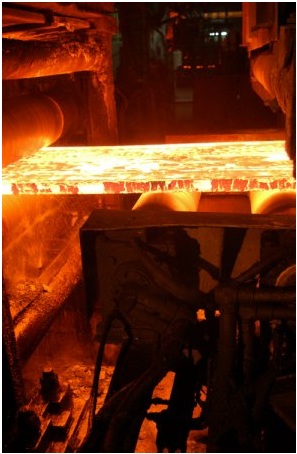What is the difference between hot roll and cold roll material? Does it make a difference when rolling the material? A number of customers have asked this question so here is some information on both.
Before diving into the differences, it is important to know that bender roller companies should have no problem working with either type of material.
Hot roll material is created by a process that involves “rolling” the steel at extremely high temperatures, usually nearing 1700° F. At this temperature, the steel is moldable and can be made into the desired shape of the mill.

Once shaped, hot rolled steel is then cooled naturally. It is the cooling process that differentiates hot roll from cold roll. The uncontrolled cooling process of hot roll allows the material to sometimes shrink and not hold the exact tolerances originally desired.
As mentioned, cold rolled steel differs from hot roll in the cooling process. For cold roll, once the material is formed into the desired shape at the mill, it undergoes further treatment. The material is cooled at room temp then put through an annealing or tempers rolling process. The cold roll process allows the material to have more exact dimensions and finer cut edges. It also increases the strength and hardness of the steel. Generally, the cost per hundred weight is higher for cold rolled.
Although these two types of steel react differently to the rolling process, leading rolling and bending companies are able to work with both. The harder cold roll steel will sometimes require more passes through the machine to be rolled to the desired radius. Pairing expert engineers, estimators and operators allows bender roller companies to create precisely rolled steel members using either type of material.







